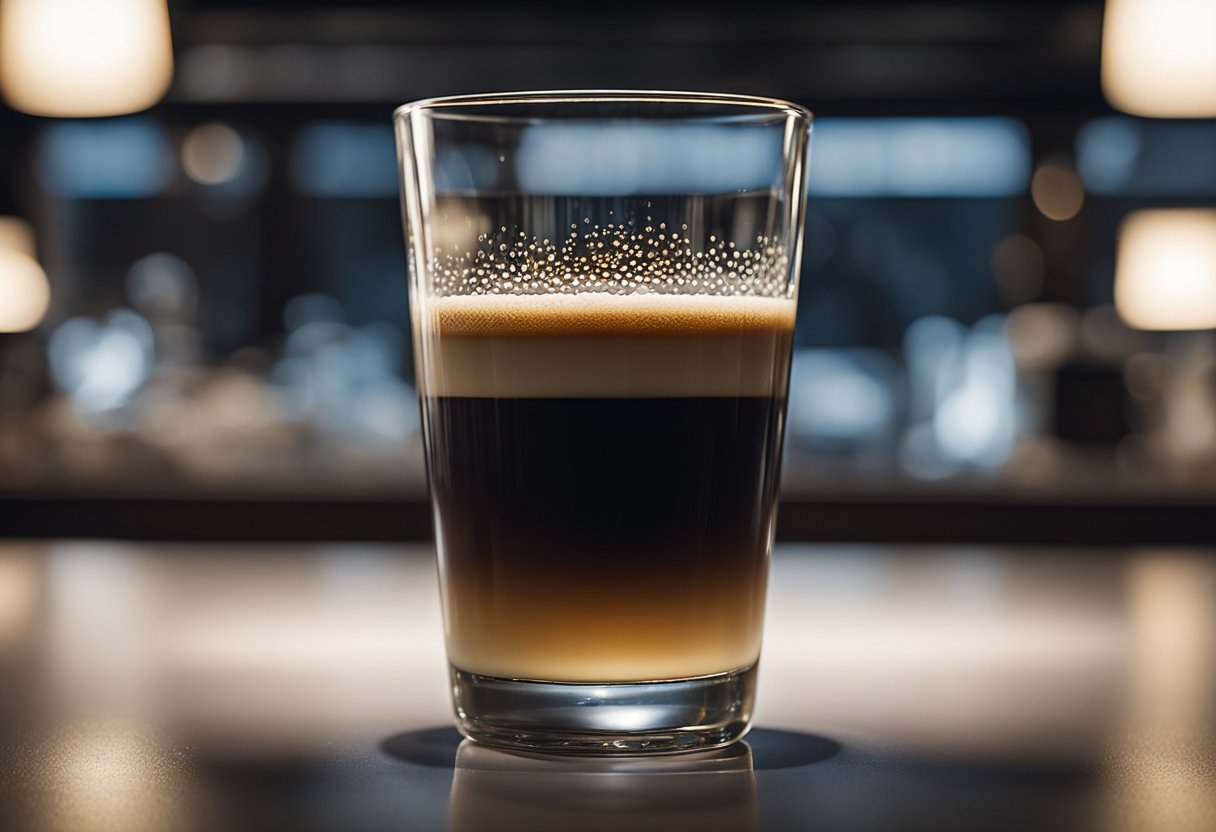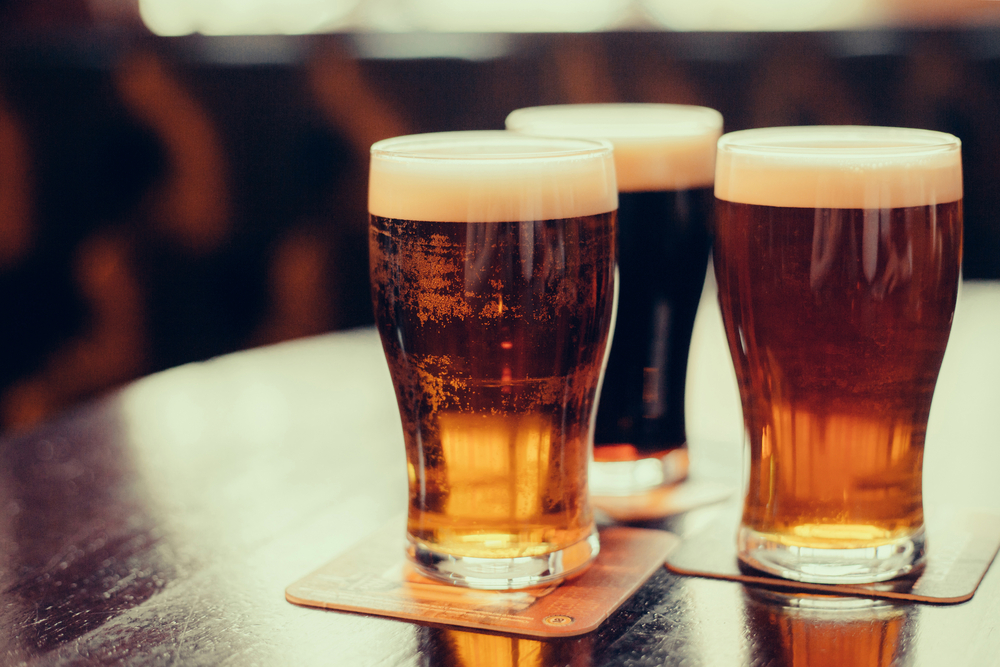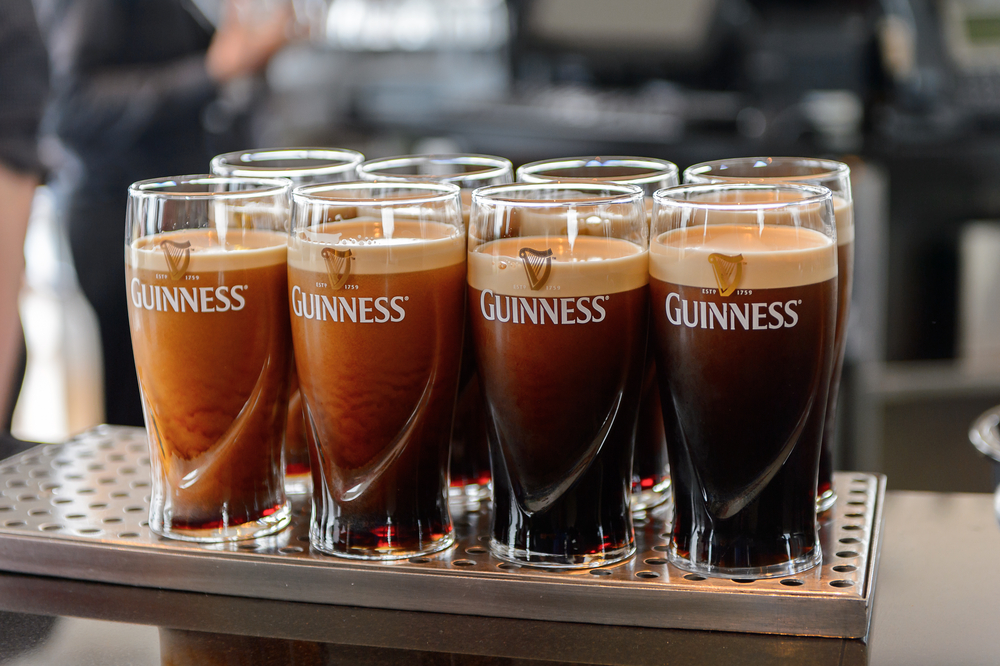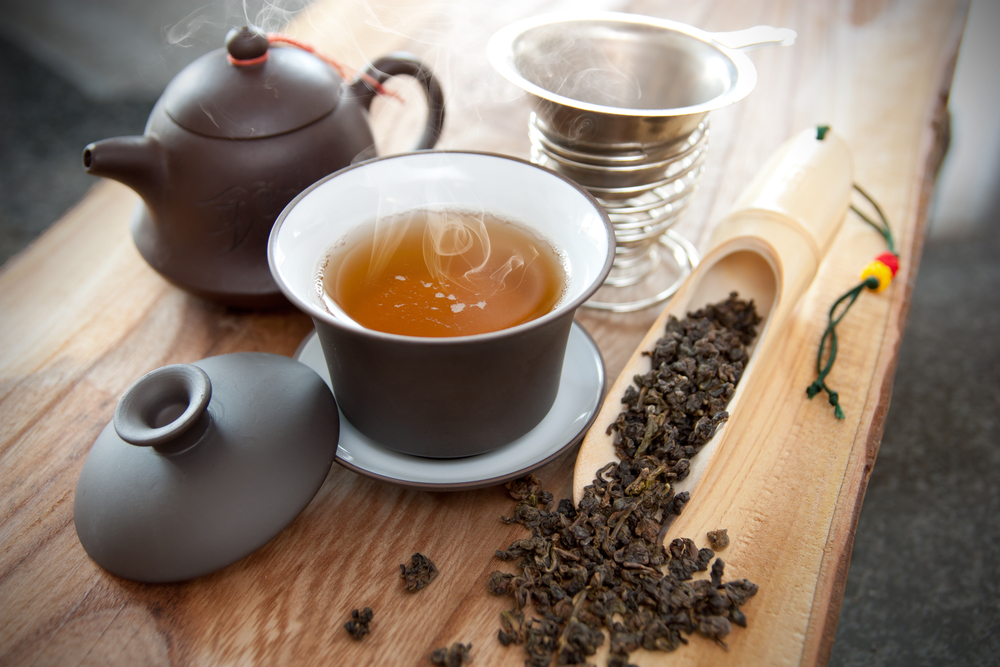I’ve been experimenting with different coffee brewing methods and have come to realize that the taste of coffee can vary greatly depending on how it’s extracted.
One of the most common extraction issues is under-extraction, which occurs when the coffee hasn’t been brewed long enough or the water temperature is too low.
In this article, I’ll be exploring what under-extracted coffee tastes like and how you can troubleshoot this issue to achieve a more balanced cup of coffee.

Understanding coffee extraction is key to understanding what under-extracted coffee tastes like. Extraction is the process of dissolving the soluble compounds in coffee beans with water to create the final cup of coffee.
When coffee is under-extracted, it means that not enough of the soluble compounds have been extracted, resulting in a weak and sour cup of coffee.
This can happen for a variety of reasons, such as using too little coffee, grinding the beans too coarsely, or not brewing for long enough.
So, what does under-extracted coffee taste like? Generally, it has a sour and acidic taste, with a lack of sweetness and body. It may also have a grainy or chalky texture, and a slightly astringent aftertaste.
While some people may prefer a more acidic coffee, under-extracted coffee is generally considered to be unbalanced and unpleasant. In the next section, we’ll explore the taste profile of under-extracted coffee in more detail.
Key Takeaways
- Under-extracted coffee has a sour and acidic taste, with a lack of sweetness and body.
- This can happen for a variety of reasons, such as using too little coffee, grinding the beans too coarsely, or not brewing for long enough.
- To troubleshoot under-extraction, you can adjust the grind size, brewing time, and water temperature to achieve a more balanced cup of coffee.
Understanding Coffee Extraction
As a coffee enthusiast, I know that the taste of coffee is directly related to the extraction process. Extraction is the process of dissolving the soluble compounds in coffee beans into water.
The coffee extraction process involves a few key factors, including method, water, temperature, pressure, coffee to water ratios, and extraction level.
The method of coffee extraction can vary, but the most common methods are drip brewing, immersion brewing, and espresso brewing. Each method has its own unique characteristics that affect the extraction process.
Water is another critical factor in coffee extraction. The water used in coffee brewing should be clean and free of impurities.
The temperature of the water also plays a significant role in coffee extraction. Optimal water temperature for coffee extraction is between 195-205°F.
Pressure is another important factor in coffee extraction. In espresso brewing, pressure is used to force water through the coffee grounds, which results in a more concentrated and intense coffee flavor.
Coffee to water ratios are also essential in coffee extraction. The ideal ratio of coffee to water is typically 1:15 or 1:16. This means that for every 1 gram of coffee, you should use 15-16 grams of water.
During the extraction process, water-soluble compounds in the coffee beans dissolve into the water, creating dissolved solids. The extraction level refers to the percentage of dissolved solids in the coffee.
An ideal extraction produces a balanced coffee flavor with a range of flavors, pleasant aroma, crisp acidity, and a hint of bitterness. Under-extracted coffee, on the other hand, lacks balance and flavor.
It happens when too few of the coffee’s soluble compounds are extracted, resulting in a weak and sour taste. Over-extracted coffee, on the other hand, is too bitter, with harsh and astringent flavors.
In summary, understanding coffee extraction is essential to producing a great cup of coffee. Factors like water, temperature, pressure, coffee to water ratios, and extraction level all play a role in determining the flavor of your coffee.
Achieving a balanced extraction is key to producing a delicious cup of coffee.
Characteristics of Under-Extracted Coffee
As a barista, I’ve tasted my fair share of under-extracted coffee. It’s not a pleasant experience, and it’s important to know what to look out for to avoid serving it to your customers. Here are some of the characteristics of under-extracted coffee:
Sourness
One of the most noticeable characteristics of under-extracted coffee is its sour taste. This is because not enough of the coffee’s flavor has been extracted during the brewing process.
The acidity in coffee is an important component of its flavor profile, but when a coffee is under-extracted, the acidity can become overpowering and unpleasant.
Sharp and Thin Flavor
Under-extracted coffee can also have a sharp, thin flavor. This is because the coffee hasn’t had enough time to fully develop its flavor profile. The result is a coffee that lacks depth and complexity, and can taste weak or watery.
Lack of Body
Another characteristic of under-extracted coffee is a lack of body. This means that the coffee can feel thin and watery in your mouth, and lacks the rich, full-bodied texture that you expect from a good cup of coffee.
Acidity
As mentioned earlier, acidity is an important component of coffee’s flavor profile. When a coffee is under-extracted, the acidity can become overpowering and unpleasant. This can make the coffee taste sour and sharp, as mentioned earlier.
In summary, under-extracted coffee is characterized by its sourness, sharp and thin flavor, lack of body, and overpowering acidity.
As a barista, it’s important to be able to identify under-extracted coffee so that you can adjust your brewing process accordingly and ensure that your customers are getting the best possible cup of coffee.
Factors Influencing Under-Extraction
When it comes to coffee brewing, under-extraction is a common problem that can result in unpleasant taste and weak coffee. Several factors can contribute to under-extraction, which include:
Grind Size
Grind size plays a crucial role in coffee extraction. If the grind size is too coarse, the water will flow through the coffee too quickly, resulting in under-extraction.
On the other hand, if the grind size is too fine, the water will take longer to pass through the coffee, leading to over-extraction. It is essential to use the right grind size for the brewing method to avoid under-extraction.
Brewing Time
Brewing time is another critical factor that can affect coffee extraction. If the brewing time is too short, the coffee will be under-extracted, resulting in a weak and sour taste.
Conversely, if the brewing time is too long, the coffee will be over-extracted, leading to a bitter and unpleasant taste. It is essential to follow the recommended brewing time for the brewing method to achieve the right balance between extraction and flavor.
Water Temperature
Water temperature is also a crucial factor that can contribute to under-extraction. If the water temperature is too low, it will not extract enough flavor from the coffee, resulting in under-extraction.
On the other hand, if the water temperature is too high, it will over-extract the coffee, leading to a bitter taste. It is essential to use the right water temperature for the brewing method to achieve the optimal extraction.
Coffee Grounds
The quality of coffee grounds can also affect the extraction process. If the coffee grounds are stale or low quality, they will not extract enough flavor from the coffee, resulting in under-extraction.
It is essential to use freshly roasted coffee beans and grind them just before brewing to achieve the best possible extraction.
Brewing Methods
Different brewing methods require different techniques to achieve the optimal extraction. For example, espresso machines require a fine grind and high pressure to extract the coffee, while a French press requires a coarse grind and longer brewing time.
It is essential to understand the brewing method and follow the recommended techniques to achieve the right extraction.
Brew Ratio
The brew ratio, which is the ratio of coffee to water, can also affect the extraction process. If the brew ratio is too low, the coffee will be under-extracted, resulting in a weak taste.
Conversely, if the brew ratio is too high, the coffee will be over-extracted, leading to a bitter taste. It is essential to use the right brew ratio for the brewing method to achieve the optimal extraction.
Water Quality
Water quality can also affect the extraction process. Hard water, which contains high levels of minerals, can affect the taste of the coffee and contribute to under-extraction.
It is essential to use high-quality water with the right mineral content to achieve the optimal extraction.
In conclusion, several factors can contribute to under-extraction, including grind size, brewing time, water temperature, coffee grounds, brewing methods, brew ratio, and water quality.
It is essential to understand these factors and follow the recommended techniques to achieve the optimal extraction and the best possible taste.
Taste Profile of Under-Extracted Coffee
When brewing coffee, extracting the right amount of flavor is key to achieving a balanced and enjoyable cup. Under-extracted coffee, on the other hand, can result in a thin flavor profile with sharp, sour tastes.
One of the main indicators of under-extracted coffee is its sourness. The acidity in coffee can be pleasant when balanced, but when the coffee is under-extracted, the sourness can be overpowering and unpleasant. This sour taste can be sharp and unbalanced, leaving an unpleasant aftertaste.
In addition to sourness, under-extracted coffee can also have a thin flavor profile. The lack of extraction means that the coffee will not have a full-bodied taste and may even have a watery consistency. This thinness can make the coffee taste weak and lacking in depth.
Under-extracted coffee can also have a bitter taste. This bitterness can be a result of the acidity in the coffee being too high, leading to a saltiness or astringency that can be unpleasant.
However, it is important to note that bitterness is not always present in under-extracted coffee, and sourness is usually the more dominant taste.
Overall, under-extracted coffee can be characterized by its sour and sharp taste, thin flavor profile, and potentially bitter aftertaste. It is important to properly extract coffee to achieve a balanced and enjoyable cup.
Comparison with Over-Extracted Coffee
When it comes to coffee extraction, there are two main outcomes that can occur: under-extraction and over-extraction. In the previous section, I discussed what under-extracted coffee tastes like.
Now, let’s take a look at the opposite end of the spectrum and compare it with over-extracted coffee.
Over-extracted coffee occurs when the brewing process extracts too much from the coffee grounds, resulting in a cup that tastes bitter and dry.
The bitterness is often described as harsh and unpleasant, and it can linger in your mouth long after you’ve finished your coffee. The dryness is caused by the over-extraction of the oils and natural sugars in the coffee, leaving the cup with a thin and watery mouthfeel.
It’s important to note that over-extracted coffee can also taste stale. This is because the brewing process can extract flavors from the coffee that have been sitting in the grounds for too long. Stale coffee can taste dull and lack the vibrant flavors that fresh coffee has.
When comparing under-extracted coffee to over-extracted coffee, it’s clear that they are very different. While under-extracted coffee can taste sour and weak, over-extracted coffee tastes bitter and dry. Both are unpleasant, but they are distinct in their own ways.
To avoid over-extracted coffee, it’s important to pay attention to the brewing process. Using the right amount of coffee, water, and brewing time can help you achieve a balanced cup that isn’t too bitter or too weak.
Additionally, using fresh coffee beans can help ensure that your cup doesn’t taste stale.
In summary, over-extracted coffee is characterized by its bitterness, dryness, and potential for staleness. It is distinct from under-extracted coffee in taste and mouthfeel, and both can be avoided by paying attention to the brewing process and using fresh coffee beans.
How to Troubleshoot Under-Extraction
When it comes to brewing coffee, under-extraction can be a common issue that can result in a sour, salty, and thin cup of coffee.
Fortunately, there are several ways to troubleshoot under-extraction and achieve a balanced extraction that is rich with an array of flavors, pleasantly aromatic, crisp with a balanced acidity, and even has a hint of low-noted bitterness to round out the flavor profile.
One of the first things to consider when troubleshooting under-extraction is the grind size of the coffee beans. If the grind size is too coarse, the water will not extract enough of the coffee’s flavors and aromas, resulting in an under-extracted cup.
On the other hand, if the grind size is too fine, the water will extract too much of the coffee’s flavors and aromas, resulting in an over-extracted cup.
Another factor to consider is the brewing time. If the brewing time is too short, the water will not extract enough of the coffee’s flavors and aromas, resulting in an under-extracted cup.
Conversely, if the brewing time is too long, the water will extract too much of the coffee’s flavors and aromas, resulting in an over-extracted cup.
The water temperature is another important factor to consider when troubleshooting under-extraction. If the water temperature is too low, the water will not extract enough of the coffee’s flavors and aromas, resulting in an under-extracted cup.
Conversely, if the water temperature is too high, the water will extract too much of the coffee’s flavors and aromas, resulting in an over-extracted cup.
The quality of the coffee grounds is also important when troubleshooting under-extraction. If the coffee grounds are stale or low-quality, they may not have enough flavor to extract, resulting in an under-extracted cup.
Using freshly roasted, high-quality coffee beans can help to ensure a more balanced extraction.
Finally, it’s important to consider the brewing method and brew ratio when troubleshooting under-extraction. Different brewing methods require different brew ratios, and adjusting the brew ratio can help to achieve a more balanced extraction.
Additionally, factors such as hard water or channeling can also contribute to under-extraction, so it’s important to consider all of these factors when troubleshooting.
Achieving a Balanced Cup of Coffee
As a coffee enthusiast, I know that achieving a balanced cup of coffee is the ultimate goal. A balanced cup of coffee is one that has a harmonious blend of flavors and aromas. It is neither too bitter nor too sour, and it has a pleasant sweetness and body.
To achieve a balanced extraction, the coffee must be brewed with the right water ratio, temperature, and time.
The water ratio is the amount of water used to brew the coffee, and it should be adjusted based on the brewing method and the roast level of the coffee. For example, a specialty espresso roast may require a different water ratio than a dark roast.
The temperature of the water is also critical. The water should be heated to the right temperature to extract the desired flavors and aromas. For espresso, the water should be heated to around 200°F (93°C) to produce a shot of espresso with a thick layer of crema.
A ristretto shot, which is a shorter and more concentrated shot of espresso, requires a lower water temperature to produce a sweeter and more complex shot.
The time of extraction is another crucial factor. Over-extraction can result in a bitter and unpleasant taste, while under-extraction can result in a sour and weak cup of coffee.
The recipe for the perfect extraction varies depending on the coffee compounds, which include caffeine, acids, sugars, oils, and polyphenols.
A balanced cup of coffee has a desirable sweetness, body, and mouthfeel. It also has a complex aroma that can be compared to black tea or dry wine. Balancing bitter notes is also essential to achieve a harmonious cup of coffee.
In summary, achieving a balanced cup of coffee requires attention to detail and a good understanding of the coffee brewing process.
By adjusting the water ratio, temperature, and time of extraction, coffee enthusiasts can create a cup of coffee that has a harmonious blend of flavors and aromas.
Frequently Asked Questions
What are the signs of under extracted coffee?
Under extracted coffee often has a sour, weak, and watery taste. It may also taste grassy, astringent, or undrinkable. The coffee may lack sweetness and have an unbalanced flavor profile.
What are the common causes of under extracted coffee?
Under extraction can be caused by various factors, including using too little coffee, using a grind that is too coarse, using water that is too cold, or not brewing the coffee for a sufficient amount of time.
How does under extraction affect the taste of coffee?
Under extraction can cause coffee to taste sour, weak, and watery. It can also result in unbalanced flavors and a lack of sweetness.
What are some tips for fixing under extracted espresso?
To fix under extracted espresso, you can try adjusting the grind size to make it finer, increasing the brew time, or using hotter water. You can also use a larger amount of coffee to water ratio.
Can under extraction be detected by the color of the coffee?
The color of the coffee can be an indicator of under extraction, but it is not always reliable. Under extracted coffee may appear lighter in color than a well-extracted coffee. However, the color can also be affected by other factors such as the roast level of the coffee beans.
What is the ideal coffee extraction process?
The ideal coffee extraction process involves using the correct amount of coffee, using a grind size that is appropriate for the brewing method, using water that is at the right temperature, and brewing the coffee for the appropriate amount of time.
The goal is to extract the desirable flavors and aromas from the coffee beans without over or under extracting them.







